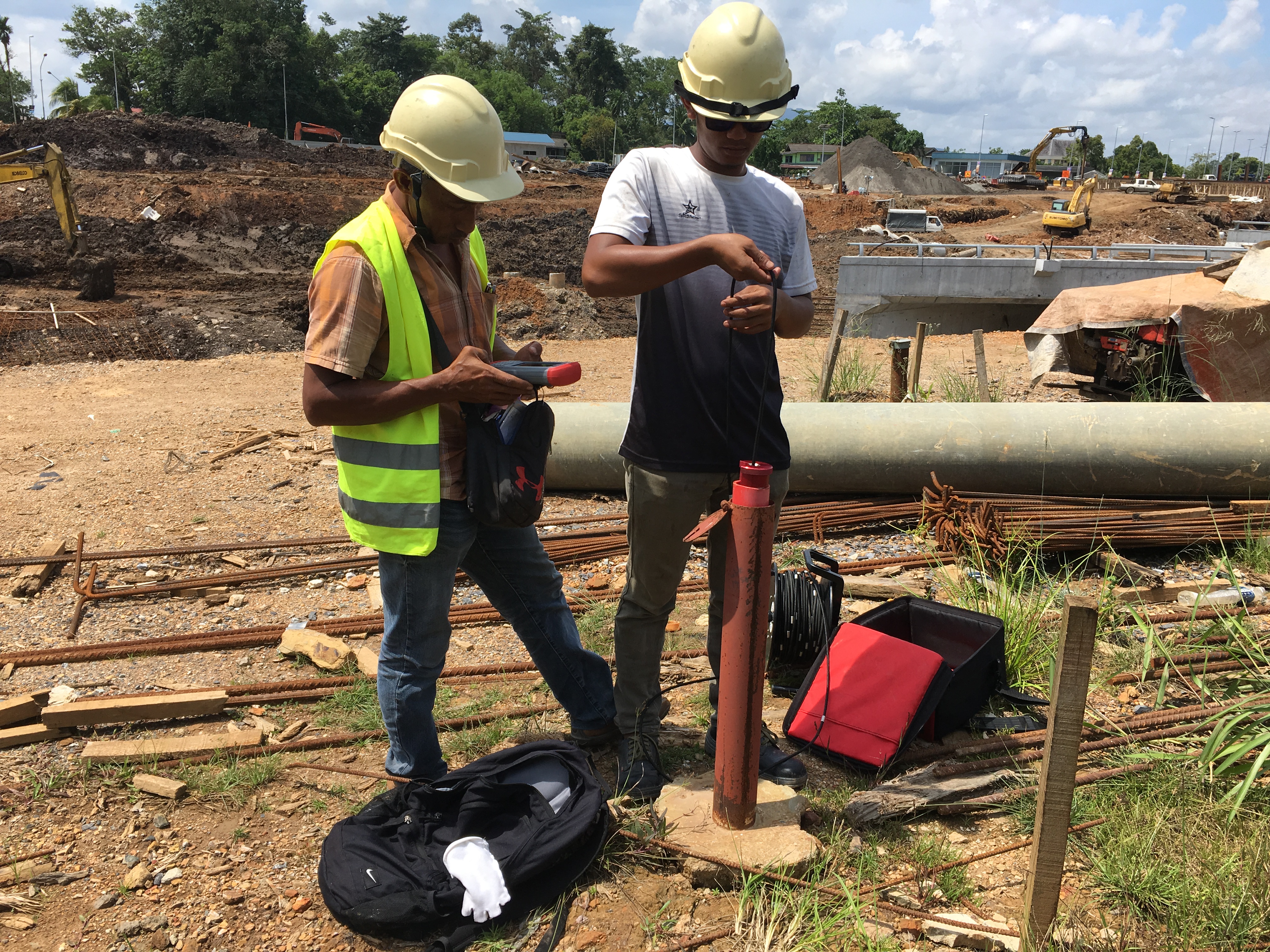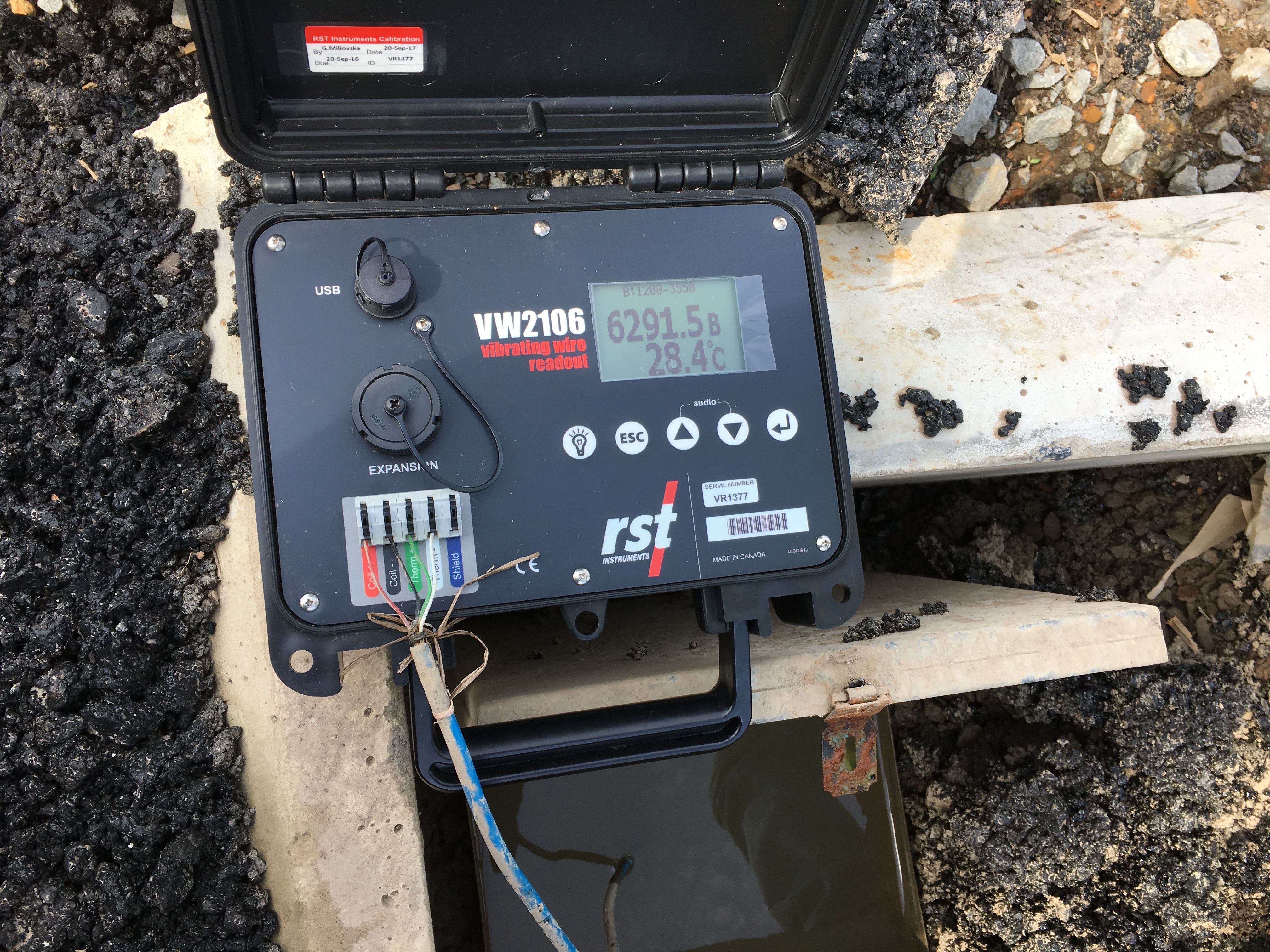Drilling
Geotechnical
Geotechnical
- Soil Investigation
- Electric Cone Penetration Test
- Light Dynamic Cone Penetrometer Test
- Plate Bearing Test
- Pressure Meter Test
- Inclinometer Test
- Vibrating Wire Piezometer Test
For this, parameters are needed that gave information on:
- Soil stratification
- Groundwater and piezometric head in all relevant layers
- Soil parameters: volumetric weight, strength, stiffness, permeability and consolidation
Sub purposes of soil investigations:
- Determination of a geotechnical soil profile
- Determination of a representative cross sections
- Soil stratification;
- Definition of geotechnical parameters
- Definition of geohydrological parameters
- Determination of groundwater table
Cone Penetration Test
- Is a method used to determine the geotechnical engineering properties of soil & delineating soil stratigraphy.
- Test method consists of pushing on instrumented cone, with the tip facing down, into the ground at a controlled rate.
- For geotechnical soil investigation, CPT is more popular compared to SPT as method of geotechnical soil investigation.
20 Ton Electrical Cone
Sample Results of CPTu
Applications of Plate Bearing Test:
- Determine the bearing capacity of the soil in-situ
- Load-deflection relationship of the ground repetitive plate loading tests of soils and flexible pavements, roads, airport runways etc.
The purpose of the pressure meter test is to measure the in-situ soil elastic parameters of various type of soil. This is achieved by carrying out the pressure meter tests in pre-drilled boreholes. The equipment consists of a probe, a water/gas tank and a digital read-out unit.
Inclinometer tests consist of the periodic measurement of inclinometer tube inclination (placed underground with regard to the vertical reference, at various quotas) to determinate soil movements: landslides and embankments stability, dams, escarpments, excavations and works of support.
By the progressive deformation of inclinometer and through comparative readings, it is possible to obtain the size of horizontal movements affecting the area or the monitored structure.



Vibrating Wire Piezometers are used to monitor pore-water pressure. They can also be used to monitor water levels.
Typical applications include:
- Monitoring pore water pressures to determine safe rates of fill or excavation.
- Monitoring pore water pressures to determine slope stability.
- Monitoring the effects of dewatering systems used for excavations.
- Monitoring the effects of ground improvement systems such as vertical drains and sand drains.
- Monitoring pore pressures to check the performance of earth fill dams and embankments.
- Monitoring pore pressures to check containment systems at land fills and tailings dams.
- Monitoring water levels in stilling basins and weirs.




Services


















